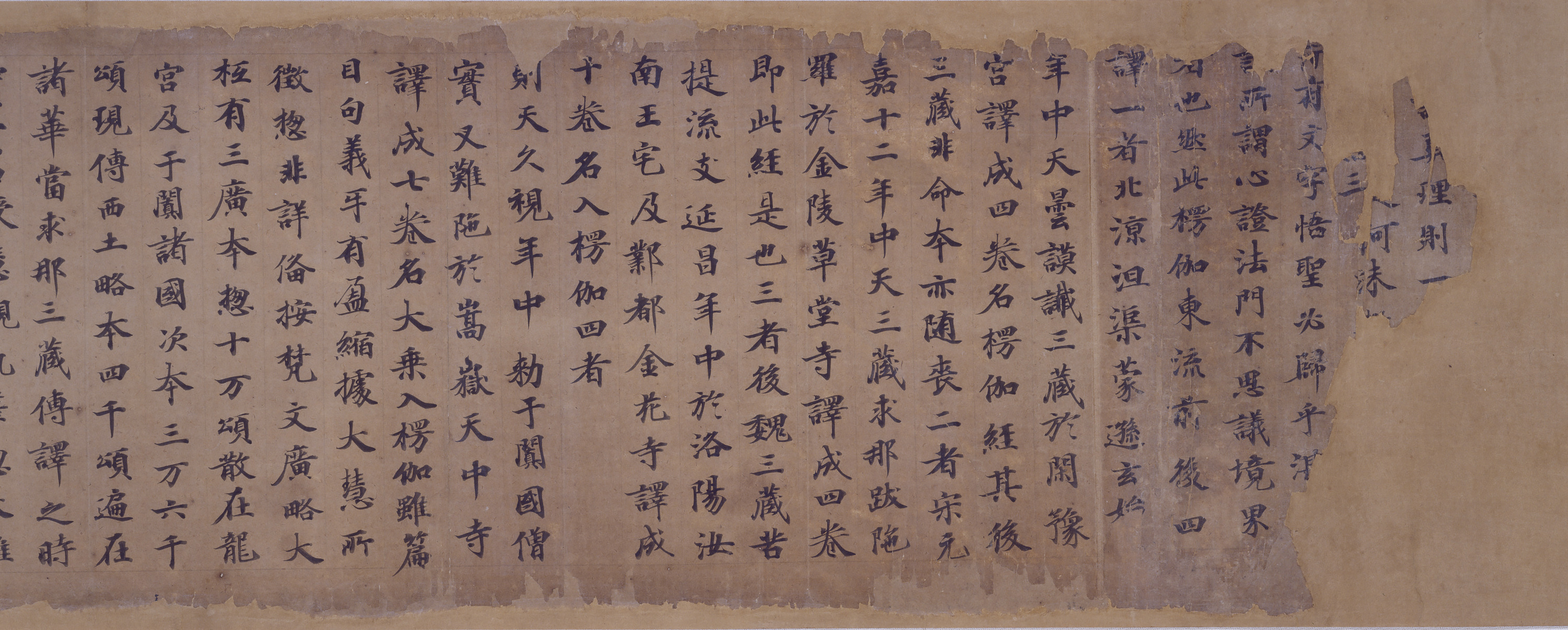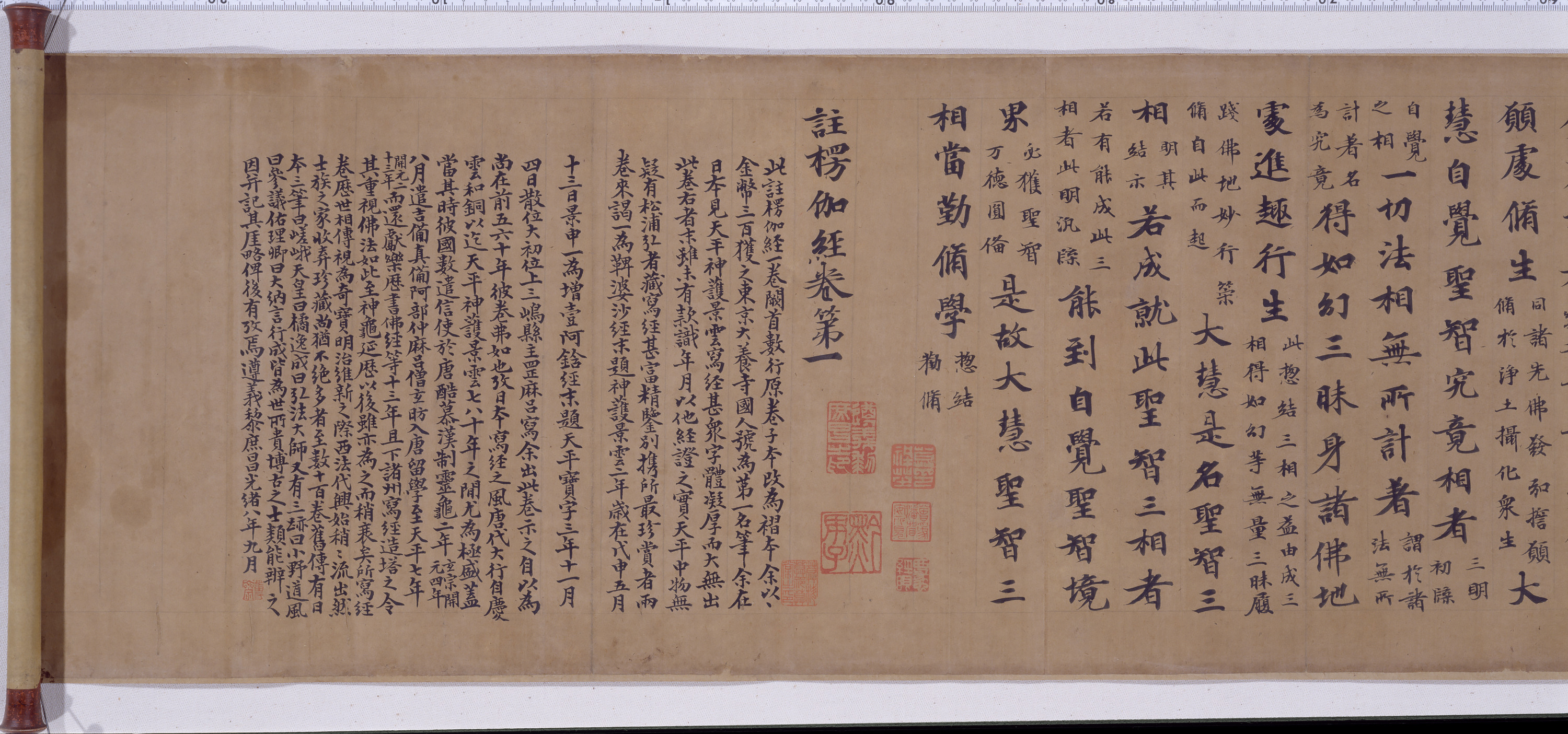- TOP
- Annotated Lengjia jing (Lankavatara Sutra), Volume 1
Overview
Important Cultural Property
Annotated Lengjia jing (Lankavatara Sutra), Volume 1
- Museum No.
- BK85
Showing 1-6 of 3
| Title | Annotated Lengjia jing (Lankavatara Sutra), Volume 1 |
|---|---|
| Designation | Important Cultural Property |
| Artist | |
| Category | Calligraphy(B), Japanese Calligraphy, Buddhist Manuscripts |
| Country | Japan |
| Period | Nara |
| Century | 8th |
| Year | |
| Quantity | |
| Materials | |
| Dimensions | Height 27.5cm Width 2437cm |
| Inscription by | |
| Signature/Seals Etc | |
| Donor | Moriya Yoshitaka |
This object may be one within a set or the title of a set. To see all objects in the set, perform a Category Search by the Museum Number below, entering numerals only before the hyphen.











This is an annotated edition of the Lankavatara Sutra (Ch., Lengjia abaduoluo baojing; J., Ryôga abatara hôkyô), translated by the Central Indian monk Gunabhadra (394-468), during the Chinese Liu Song period (420-479). Also known as the Lankavatara Sutra in Four Fascicles (Ch., Shiquan Lengjia jing; J., Shikan Ryôgakyô), this version is the oldest of three extant Chinese translations of this scripture.
This volume, which is now missing the first section of its preface, was copied in large lettering with ten to eleven characters per line. The annotations by the Chinese monk Zhiyan (n.d.) of Dajing’ai-si Temple were written in smaller characters in two lines. At the end of the scroll is an inscription written by Li Shuchang (1837-97), a Chinese envoy to Japan, dated 1882 (Guangxu 8). Two fascicles, which are considered part of an original set, can today be found in the collections of Chion-in Temple in Kyoto (Volume 5) and the Nezu Museum in Tokyo (Volume 7).
Japan-Nara